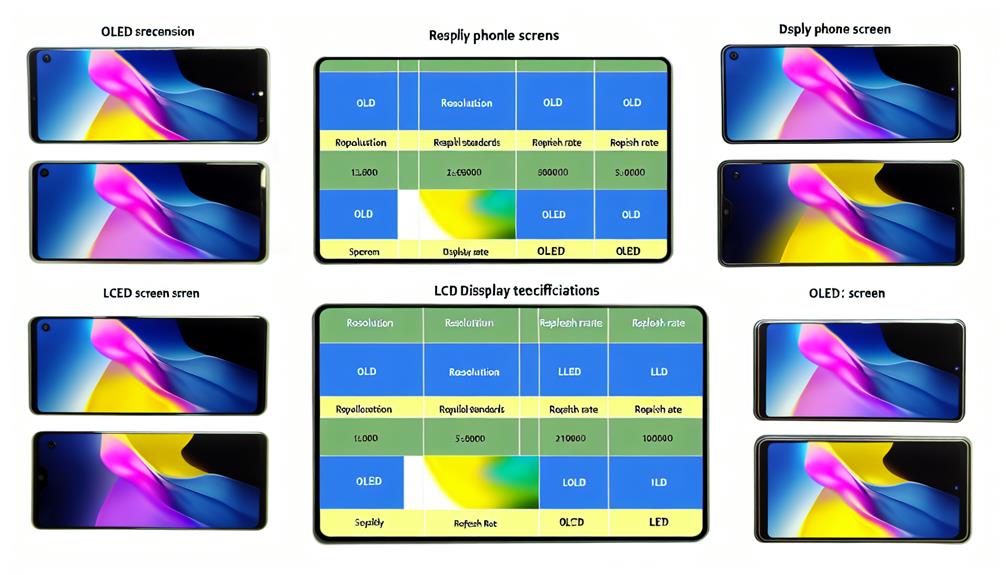When it comes to buying a new mobile phone, whether its android or ios, navigating through the sea of specifications can feel like trying to understand a new language. It’s easy to get lost in the technical jargon and flashy marketing terms, leaving you unsure of what really matters. But fear not, because understanding mobile phone specifications doesn’t have to be an insurmountable task. By unraveling the intricacies of processors, memory, display, battery, camera, and connectivity on your Android or iOS device, you can make a well-informed decision and find the perfect smartphone to suit your needs in 2024. So, let’s dive into the world of mobile phone specifications and discover how to decode them like a pro.
Understanding Processors
When you’re in the market for a new smartphone, getting to grips with the processor inside is key to unlocking how snappy and capable your device will be. Think of the processor’s architecture as its blueprint – it’s what dictates how smoothly it can juggle your apps and tasks. To gauge the muscle of various processors, it’s smart to peek at benchmark scores. These scores are like the leaderboard in a race, showing you which processors are ahead in terms of speed and power.
Manufacturers each have their own lineup of chips, like Qualcomm with its renowned Snapdragon series and MediaTek with its impressive Helio X and P series. Each has its unique architecture and set of scores that reflect its prowess. Plus, the GPU nestled inside the processor is the maestro of everything you see on the screen. Its strength is measured in something called GFLOPS – simply put, the higher the GFLOPS, the more stunning and smooth your visual experience will be.
Exploring Memory Options

When you’re diving into the world of mobile phones, it’s essential to get a handle on several key features to enjoy a fluid and visually stunning experience. Start with the RAM and ROM — these are the brains and the storage locker of your device. You’ll want a phone that doesn’t skimp on ROM; aim for at least 16GB so you can keep all your apps and photos without a hitch. If you’re eyeing an Android, the ability to bump up the storage with a MicroSD card is a real plus.
Now, let’s talk about RAM. This is what keeps your phone from getting bogged down when you’re flipping between apps or tackling multiple tasks at once. Nowadays, the norm is about 2-3GB of RAM, but if you’re into the latest and greatest, look for phones boasting 4GB or more. That’s where you’ll find your multitasking champion.
But it’s not just about what’s under the hood. The screen is your portal to virtual reality on your mobile device, where size and quality hold significant importance. Whether it’s OLED, AMOLED, or LCD, the type of display can make or break your viewing pleasure. And don’t forget the resolution and pixel density — these are the details that make your images and videos pop with clarity and color.
All in all, picking the right phone is about balancing these features for a seamless, eye-popping mobile experience. Keep these tips in mind, and you’ll be well on your way to finding the perfect companion for your pocket.
Choosing the Right Display

When deciding on a mobile phone, the size and clarity of the screen are key for a top-notch visual experience. A bigger screen paired with higher resolution means images look crystal clear and pull you into the action. Here’s a quick guide to see how screen dimensions and pixel count can enhance your viewing:
| Screen Size | Pixel Count |
|---|---|
| 5.8 inches | 1080 x 2340 |
| 6.5 inches | 1242 x 2688 |
| 6.2 inches | 1440 x 3200 |
As you can see, bigger screens and more pixels take your visuals from good to great. To dive deep into your favorite shows and games with vibrant detail, aim for the largest and most precise screen your budget allows.
Evaluating Battery Performance

Understanding how well a mobile phone’s battery works is key to knowing how the phone performs overall. When you’re looking at battery life, it’s important to think about how efficiently the phone uses power. This tells you how long the phone can run before it needs another charge. Look for phones with big batteries, which are usually listed in milliamp hours, or mAh, to keep your phone going longer. Also, check if the phone has fast-charging features like Qualcomm Quick Charge; this can be a real time-saver, especially for phones that have larger batteries. Many handsets now offer wireless charging, and it’s helpful if they work with common standards like Qi or PMA, just ensure to check this feature when switching SIMs. Another thing to keep an eye out for is if the phone has special settings to save power. These can help make sure your phone stays alive all day without needing a charge. By paying attention to these details, you’ll be able to choose a phone with a battery that really suits your needs.
Mastering Camera Features

When you’re hunting for a smartphone that will let you ace the art of photography, it’s essential to get to grips with how a camera’s resolution can sharpen your images, adding clarity and detail. In terms of device forensics, think of resolution as the number of pixels; higher megapixels mean your pictures will pop with more crispness. Plus, getting a handle on how aperture affects your shots is key—it’s all about guiding the light. A wider aperture can be a savior when the sun’s gone down, inviting just enough light to keep your pictures bright. In well-lit spaces, a narrower aperture helps keep everything in focus, giving your photos a professional edge. As you dive deeper into these features, you’ll find your smartphone photography skills soaring, capturing those breathtaking moments with ease.






